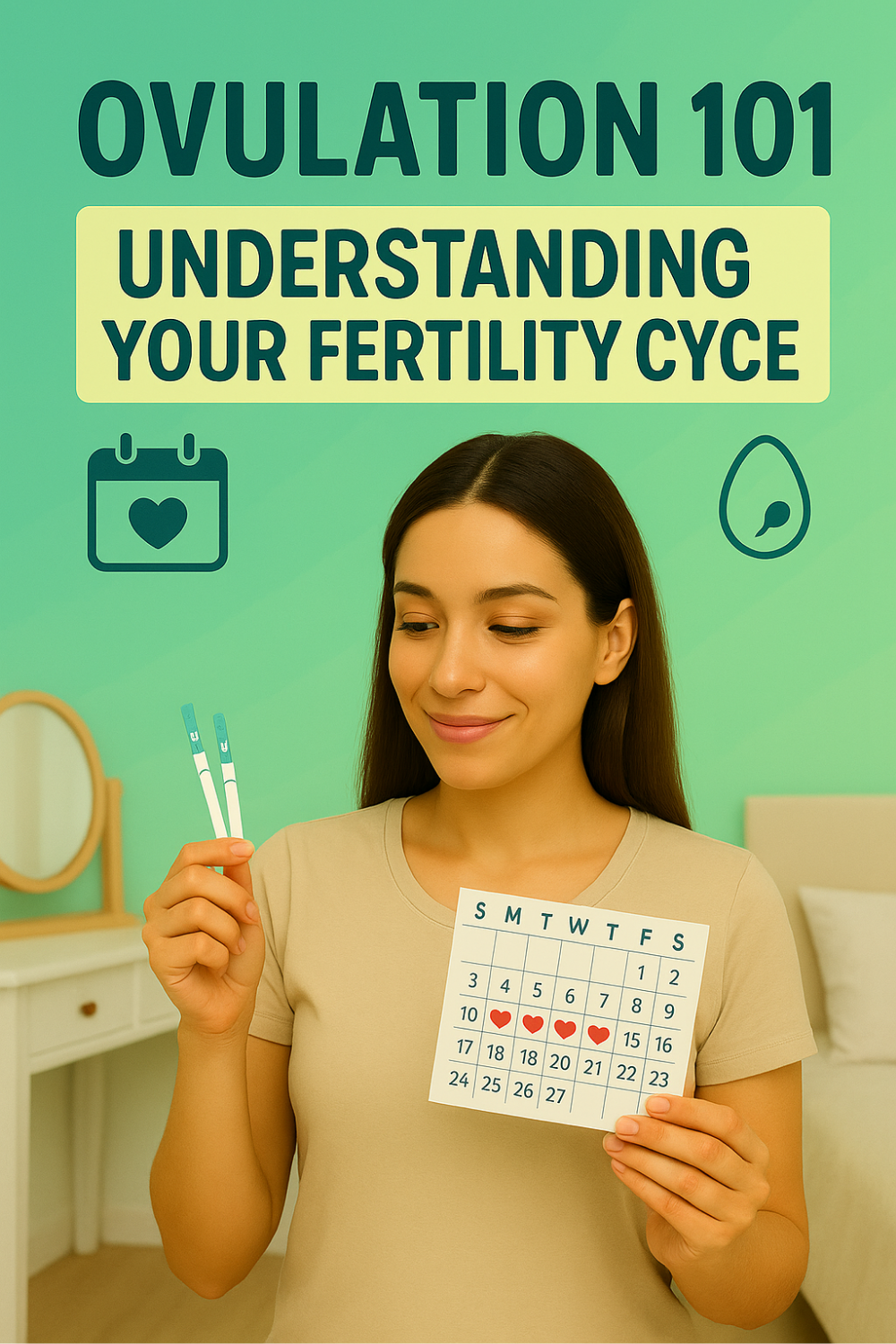Ready to start or expand your family? Understanding your ovulation cycle and accurately tracking your peak fertility window significantly boosts your chances of conception. Knowing exactly when ovulation occurs helps you plan effectively and reduces guesswork. Curious about your own fertility timeline? Follow along to learn simple, reliable methods for tracking ovulation and optimizing your chances of pregnancy today.

- What Exactly is Ovulation?
- How Ovulation Predicts Fertility
- Common Signs of Ovulation You Should Know
- Effective Methods to Track Ovulation
- How to Identify Your Peak Fertility Days
- Common Ovulation Tracking Mistakes to Avoid
- Tips to Maximize Your Chances of Conceiving
What Exactly is Ovulation?
Ovulation is the process when your ovaries release a mature egg each menstrual cycle, typically occurring around the midpoint between periods. This egg travels down the fallopian tube, where it can be fertilized by sperm, making ovulation the cornerstone of conception.
Understanding this process clearly helps you identify your most fertile days—the ideal window for attempting pregnancy. Typically, ovulation occurs about 14 days before your next menstrual period starts, though this timing can vary from woman to woman.
How Ovulation Predicts Fertility
Your fertility is directly tied to ovulation. Once the egg is released, it’s viable for approximately 12–24 hours. However, sperm can survive in your reproductive tract for 3–5 days. That means your most fertile period extends from approximately five days before ovulation until one day after ovulation.
Tracking your ovulation accurately allows you to predict precisely when you’re most likely to conceive, significantly improving your chances of successful pregnancy.
Common Signs of Ovulation You Should Know
Recognizing common signs and symptoms of ovulation helps pinpoint your fertile window accurately. Key ovulation signs include:
- Changes in Cervical Mucus: Becomes clear, slippery, and stretchy (similar to egg whites) around ovulation.
- Mild Cramping: Brief, one-sided lower abdominal discomfort (mittelschmerz) may signal ovulation.
- Increased Libido: A natural rise in sexual desire often accompanies ovulation.
- Basal Body Temperature (BBT) Increase: Slight rise in body temperature immediately after ovulation, typically by about 0.5°F (0.3°C).
- Breast Tenderness: Breasts may become slightly tender or fuller during ovulation.
Recognizing these signs consistently enhances your ability to pinpoint peak fertility days accurately.
Effective Methods to Track Ovulation
Several reliable methods exist for effectively tracking your ovulation cycle:
1. Ovulation Predictor Kits (OPKs)
These at-home urine tests detect luteinizing hormone (LH), surging 24–36 hours before ovulation. Easy to use, OPKs provide clear indications of your upcoming ovulation window.
2. Basal Body Temperature (BBT) Charting
Taking your temperature each morning upon waking helps detect slight temperature rises indicating ovulation. Regular charting provides reliable monthly patterns.
3. Cervical Mucus Monitoring
Observing cervical mucus changes helps identify fertile days accurately and naturally.
4. Cycle Tracking Apps
Various fertility apps track periods, ovulation predictions, and fertility symptoms conveniently.
Combining multiple tracking methods significantly improves accuracy, offering clearer insights into your personal fertility pattern.
How to Identify Your Peak Fertility Days
Identifying peak fertility days involves combining methods to pinpoint your exact ovulation window:
Step 1: Start Tracking Early
Begin tracking shortly after your menstrual period ends, noting daily cervical mucus, using OPKs, and/or taking basal temperatures.
Step 2: Recognize LH Surge
When an OPK signals an LH surge, ovulation typically occurs within the next 24–36 hours—marking your peak fertility window.
Step 3: Monitor Cervical Mucus
When cervical mucus becomes clear, slippery, and stretchy, this indicates peak fertility, signaling ovulation is near.
Step 4: Confirm with BBT Rise
After ovulation, your basal temperature rises slightly. Noticing this rise confirms ovulation, helping you accurately identify your fertility window monthly.
Clearly identifying these peak days significantly increases your chances of successful conception each cycle.
Common Ovulation Tracking Mistakes to Avoid
Avoid these common ovulation tracking mistakes to enhance accuracy and maximize your pregnancy odds:
- Testing at the Wrong Time: Always test OPKs mid-afternoon for accurate LH surge detection, avoiding morning hours.
- Inconsistent BBT Recording: Measure temperature immediately upon waking at the same time daily for reliable results.
- Ignoring Irregular Cycles: Use multiple tracking methods if your menstrual cycle varies significantly month-to-month.
- Relying on a Single Method: Combining two or more tracking methods offers the most accurate ovulation predictions.
Avoiding these mistakes ensures your ovulation tracking remains effective, reliable, and productive.
Tips to Maximize Your Chances of Conceiving
Improve your pregnancy chances each cycle with these simple, practical tips:
- Regular Intercourse During Fertility Window: Engage in intercourse every 1–2 days during peak fertile periods.
- Maintain Healthy Lifestyle: Healthy weight, balanced diet, regular exercise, and stress management boost fertility significantly.
- Avoid Harmful Habits: Limit caffeine, avoid alcohol and tobacco, and manage stress to support healthy conception.
- Seek Medical Advice If Needed: Consult a fertility specialist if conception hasn’t occurred after 6–12 months of regular, unprotected intercourse.
Regularly following these simple tips greatly improves your odds of successful pregnancy.
Frequently Asked Questions
How long does ovulation last each cycle?
Ovulation itself lasts about 12–24 hours, but your fertile window extends about 5 days prior, due to sperm survival.
When should I start using ovulation predictor kits (OPKs)?
Begin testing about 4–5 days before your estimated ovulation day, typically mid-cycle.
Can tracking ovulation help if I have irregular periods?
Yes, combining cervical mucus monitoring, OPKs, and basal temperature charting significantly improves ovulation detection with irregular cycles.
Is basal temperature charting reliable for everyone?
Yes, but it requires consistency and daily morning measurements immediately upon waking for accurate results.
What if I never see a positive ovulation test?
If consistent testing yields no positive results, consult your healthcare provider for further evaluation and guidance.